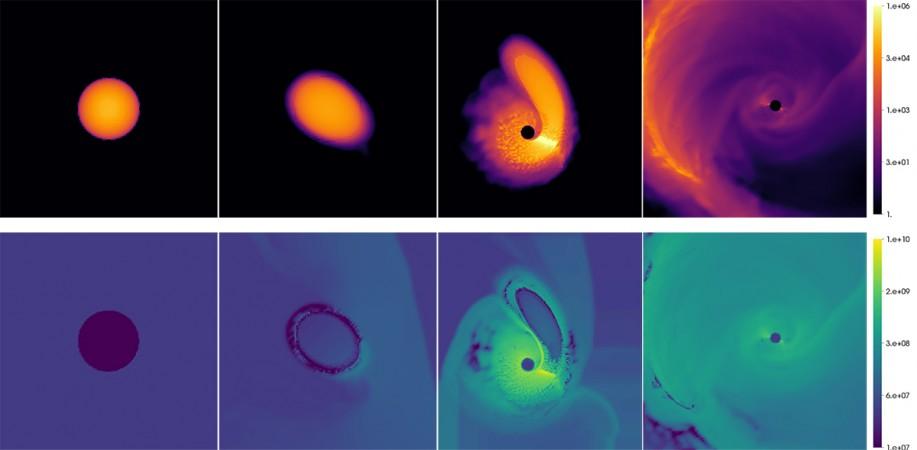
Dead white dwarf stars can sometimes be briefly reignited by a passing black hole. This happens because black hole gravity is so strong that it can influence tides on the dead star's surface, firing it back up for a short period of time.
According to a study authored by Chris Fragile from the College of Charleston, this violent phenomenon, called a tidal disruption event (TDE) results in any body, in this case a white dwarf star, getting stretched and compressed in opposite directions simultaneously.
A white dwarf, explains a release put out by the researchers, is the dead core of a star. The Sun in due course of time will become a red giant and shed most of its stellar mass, leaving behind a dense white dwarf star.
The TDE caused by a black hole could possibly reignite a white dwarf. The compressive forces of the TDE could kick-start nuclear fusion in a star and bring it back to life for a few seconds, say the researchers.

While that seems unlikely, the report goes on to mention that for this to happen, the white dwarf has to pass within what is known as the "tidal radius" and the black hole itself must be huge -- at least an intermediate-mass black hole—between 1,000 to 10,000 solar mass. The larger the black hole, the wider its tidal radius.
If the black hole is too small, the TDE will be too weak to cause reignition and if the black hole is too big, the entire white dwarf will get swallowed and shredded before the TDE can trigger reignition, notes the report.
TDEs are, at times capable of putting out massively powerful electromagnetic outbursts as well as gravitational-wave signals that could even be detected. However, so far, there have not been many such discoveries that have shown signatures of a tidal disruption event. Also, none of them seem to have emanated from the shredding of a white dwarf, said the study.
Some material ripped from the reignited white dwarf will get accreted—eaten—by the black hole and a good amount of material will be flung away into the space surrounding the black hole as unbound debris. It is possible, notes the report, can eventually gather itself into a future generation of planets and even stars.

















